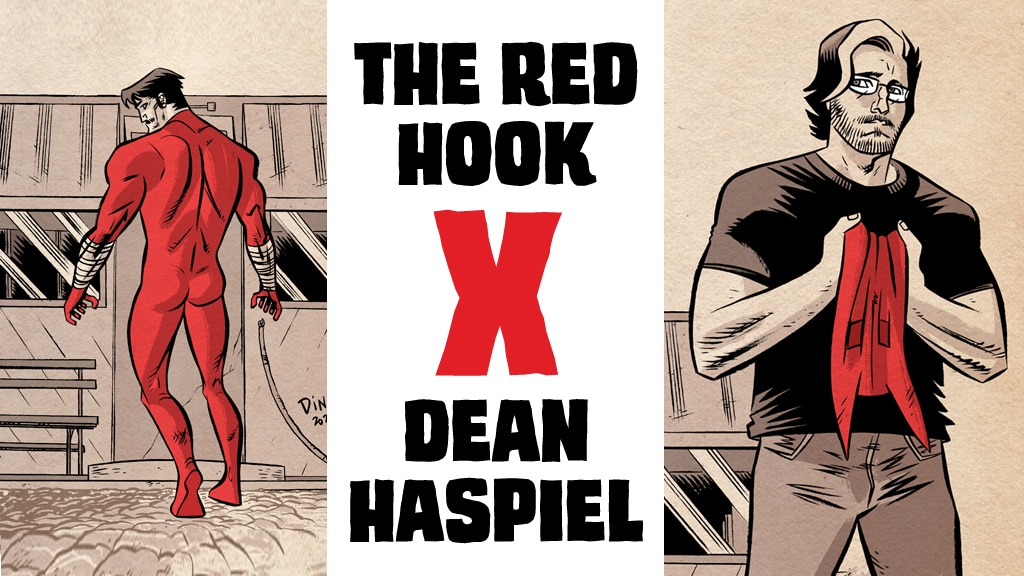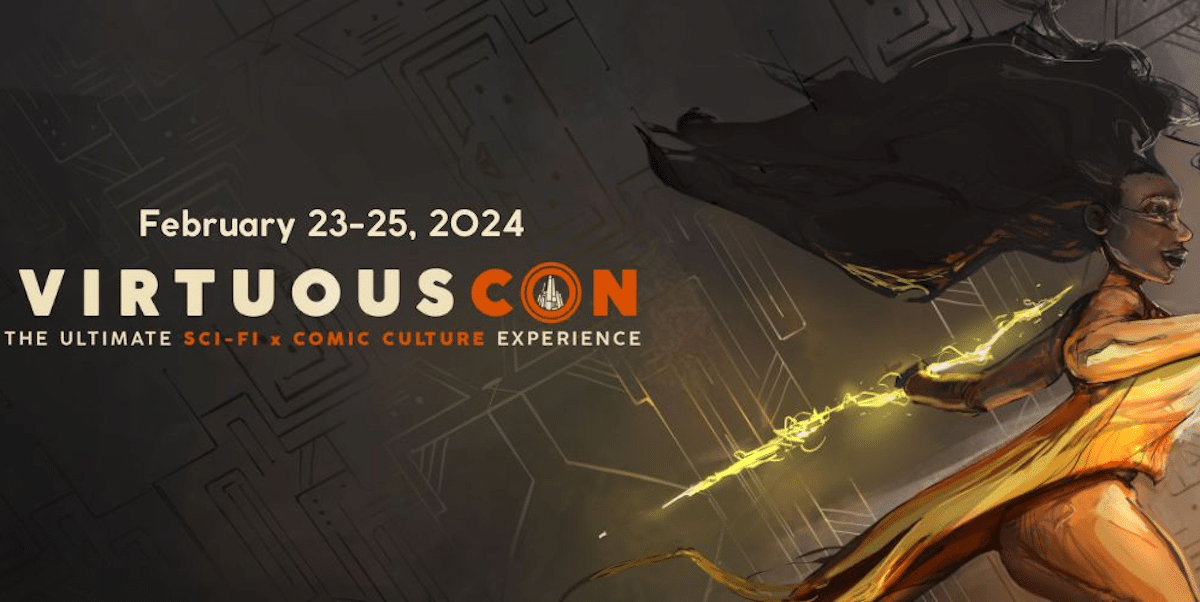With the uptick of fan culture leading to the proliferation of comic conventions all across the country, surely the thought of introducing another one to the mix would leave people exhausted. Right? WRONG! This Sunday November 13th marks the inaugural edition of the Jewish Comic-Con, to be held at Congregation Kol Israel in Brooklyn (603 St Johns Pl). The Jewish Com Con brings together comic book creators, artists, rabbis, and fans, for a wide-ranging survey at the contribution Jews have had in the comics industry and popular entertainment.
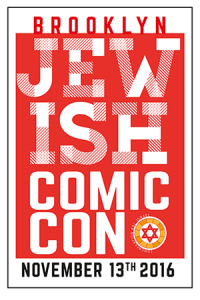
The COMICS BEAT reached out to the organizers and a bevy of the con’s featured guests and collected a fantastic collection of in-depth quotes and interviews that will PREVIEW what Jewish Comic-Con sets out to achieve, how it came about, and what people who attend should walk away with!
FABRICE SAPOLSKY is a comic book creator and one of the visionaries behind Jewish Comic Con. He is a comics writer, notably for SPIDER-MAN NOIR (Marvel Comics) and is the creator of INTERTWINED from Dynamite Comics.
AJ Frost: How did the idea of a “Jewish Comic-Con” originally pop into your head?
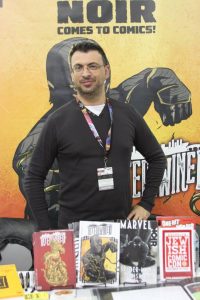
SAPOLSKY: It all started at a now famous Friday night (Shabbat) dinner at Fred Polaniecki’s house. Fred is the President of the Kol Israel Synagogue in Brooklyn. He said he wanted to do something around comic books through the Brooklyn Jewish Art Gallery program he, and a few others, had initiated a couple of years ago. My answer was: “Why doing another comic book art show? Let’s do a Jewish Comic Con!” And he took me seriously. Literally three days after, we started brainstorming about it… And here we are! The convention is this Sunday.
Frost: As a comics creator and a comics fan, what makes you most excited about holding such a convention?
SAPOLSKY: Well… First, let me say that I never imagined I would be in such a position of curating my own show one day. I did a lot of things in my nearly 20 years in this industry. I created a comic book magazine, I’m writing comics, then lettering them too. I sometimes edit or translate for others. I also draw now. But this… is another level of coolness and hard work. I’m excited because we are pledging ourselves to pay homage to the founders of the comic book industry who, in their vast majority were Jewish. We have to remember that without the Siegels, the Kirbys, the Fingers, Robinsons, Kane, Lees, Kuberts or Eisners, we wouldn’t be having this conversation today. The entertainment world as a whole wouldn’t exist as it is. If not for two Jewish kids from Cleveland, there wouldn’t be a DC Universe nor even a Marvel one. We have to be grateful. A lot of people today have forgotten about that. Just like many don’t even know that Avengers has been a comic book before it was ever a movie.
The Jewish Comic Con is not the only answer, but it’s ours. And I humbly give my time, energy and as little talent I have for that. And we brought along an impressive roster for that first edition: Dean Haspiel, Josh Neufeld, Mort Gerberg, Ariel Schrag, Jeff Newelt, Julian Voloj, Jordan B. Gorfinkel, Isaac Goodheart and more! Danny Fingeroth and Arie Kaplan helped me putting together the panels and will moderate them all day. Greg Pak will also be there on a panel. The Kubert School is going to be there too. Many other creators were interested but had other commitments that weekend. No worries, we’re already planning season 2!
Frost: What does it mean to you to hold this inaugural comic con in a synagogue? Surely a first?
SAPOLSKY: I may be wrong, but I even think it’s the first comic book shot to take place in a fully functional temple, of any religion. As I said, it all started with the Kol Israel synagogue. When I asked Fred where the Con should take place. He said, “At the Brooklyn Jewish Gallery.” So I candidly asked: “Wait a minute… I visited the synagogue, where’s the gallery?” His answer was beautiful: “The synagogue IS the gallery.”
This building is incredible. It’s a 90-plus years old synagogue. It’s an old lady which needs to be loved again and we believe that with events such as this one, we can find the money to have it shine again. That’s the second reason why we’re doing it there: to help this place being as great as its members. Because, I have to say this, the people you see at this synagogue are just wonderful open-minded human beings. Oh, and the Rabbi, Sam Reinstein, who’s also a comic book connoisseur, will conduct services in the morning and afternoon during the con. That’s certainly something unusual.
Frost: What are you most proud of in terms of the Jewish contribution to the comic book vernacular, as well as popular culture more generally?
SAPOLSKY: I wouldn’t use the word “proud.” There’s something fascinating. When the Golden Age creators founded our industry. They carefully avoided “in your face” Jewish references. These were different times. Subtler times maybe. Where showing your Jewishness could prove counterproductive or even dangerous. It’s only later in the 20th century that faith and religion have become something you could talk about in comics. It certainly was referenced to in the silver age, but I believe that it’s with the 1970s that it really began to change. I’ll take two examples (among so many). On the one hand, Will Eisner did a lot to bring Jewish themes and sometimes folklore to comics. Especially later in his career. On the other hand, you have someone instrumental in comics like Jack Kirby, who hid his Jewish roots for about all his life but those were still there in his work. It’s bold, but I’d dare to compare Kirby to philosopher Spinoza. He was a secular Jew who gave the world his own perception of the universe through philosophy. Jack Kirby was like that. He gave us the New Gods. The Fantastic Four. The Silver Surfer and so many others. He kept “toying” with the idea of God through comics. Both Eisner and Kirby were born on the same year. They would have turned 99 this year. Two different Jews. Two different ways of making comics. And there are so many more!
I remember when Kitty Pryde, of the X-Men, showed a star of David around her neck, it was the first time I saw a religious symbol on a Marvel character. I was about 10 years old, but that struck me. As time went by, I was able to spot more and more faith and religion in comics. I think what motivated the creators of those comics is to depict characters that feel real. That readers can identify with. Our world is diverse. And comics are more and more diverse and it’s a great thing.
This is the 21st century. People now feel the need to show their colors, their identity. You are who you are. And you shouldn’t be ashamed about it. Wherever you come from, what you look like, your ethnicity, your religion, your sexual orientation, your political beliefs: there’s something for you at the Jewish Comic Con and we proudly welcome you!
Frost: What do you want people to walk away with after attending the con? What is the one question you want them to dwell on after a day of learning and comics?
SAPOLSKY: For me, there’s also something important: I think, especially in these times of division and somewhat fear of others to show an open hand, an open mind, an open heart. Comics are universal. They were designed that way. Religion… faith… This is very personal. A lot of non-Jewish people never set foot in a synagogue in their lives. It may be a mysterious place for them. New York may be different, but in many places I visited, including my birth country, France, there’s some kind of failure to grasp who Jews are, what makes us who we are. And I believe that you can easily dehumanize and call names what you don’t know or don’t understand. You can fight antisemitism in many ways. I choose the comic book way. Bridging people through comics. The Jewish Comic Con is not a Jew-Centric event by design. It’s for everybody. It’s a REAL Comic Con. Just smaller in size. And with a tremendous amount of talent, both Jewish and non-Jewish. I want people to leave the con saying : “I didn’t know that, I learned a lot of cool things today!” or “It opened my mind on many levels!” or “These creators are amazing, I want to read/see more from them.”
I’ll add this: In American English, there are a lot of Yiddish words people use every day, not even knowing where they came from, like Chutzpah or Glitch or Lox. At some point, someone will remind them where they came from, with a smile. The Jewish Comic Con does the same with comics (laughs).
ARIE KAPLAN – Consultant for Jewish Comic Con and moderator for the panels. Arie is a comic book writer, an award-winning nonfiction author, and a screenwriter for television, video games, & transmedia. Arie is the writer of many Jewish-themed comic book stories including a SUPERMAN: Man of Snow, and a SIMPSONS Hanukkah story for Bongo Comics), as well as the award-winning nonfiction book FROM KRAKOW TO KRYPTON: JEWS AND COMIC BOOKS (Jewish Publication Society, 2008).
(This excerpt is a preview of an in-depth interview.)
Frost: What is your goal for Jewish Comic Con?
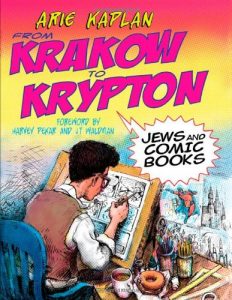
KAPLAN: I wouldn’t say that I had an “agenda,” but I would say that the panels deal with everything from the Jewish roots of comics (the fact that many of the founders of the comic book industry were Jewish) to specific Jewish characters in comic books and the way comics have depicted the Holocaust. So during the Jewish Comic Con, hopefully we (Fabrice Sapolsky, Danny Fingeroth, myself, and the various panelists & guests) will provide the audience with a good idea of the way in which Jewish comic book writers, artists, and editors have contributed to the industry. And also, how Jewish characters have been presented and depicted in that industry.
And who knows? Maybe I’ll even work in a reference to Bernie Cornfeld in one of the panels. (But I can’t promise anything!) Oh, by the way, some of the guests and panelists at Jewish Comic Con will be: Dean Haspiel, Ariel Schrag, Jordan B. Gorfinkel, Sholly Fisch, Josh Neufeld, Greg Pak, Craig Yoe, Rafael Medoff, Darren Vincenzo, Rabbi Cary Friedman, and Julian Voloj.
JEFF NEWELT aka JahFurry is comics editor of HEEB Magazine, and Harvey Pekar’s (American Splendor) editor on the webcomics series The Pekar Project and graphic novel CLEVELAND. On Preview Night this Saturday, he will be doing a reading of Pekar’s comics, projected plus jazzy soundtrack.
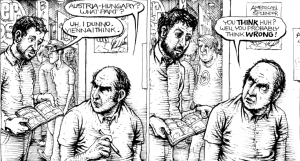
NEWELT: “I had the pleasure and privilege to work and play with the late splendorous American, Harvey Pekar. Among other unique qualities, he had a distinctive raspy voice, and I couldn’t resist imitating it, out of love of course, and not just to others, but to him! He’d say “Quit imitating me man, there’s only one me,” and I’d tease him that when we get an animation deal for Cleveland, I’m gonna challenge him to a Pekar-off for the voice gig. He knew I was teasing. Though neither of us were very religious we both had very Jewish sensibilities, the humor, and were steeped in Yiddishkeit. When we first talked on the phone and he asked where my Jewish family was from. I said, well my name, Newelt, I think from Vienna. “VIENNA! he barked, ehh you’re probably a Galitzianer…” and he proceeded to give me an erudite lecture on turn of the century Austria-Hungary. The next day he calls me and says “Hey I have a new story for the Pekar Project … so I’m talking to you…” And that’s how “Legendary Vienna” with art by Joseph Remnant happened.”
DEAN HASPIEL is an award winning multimedia artist who writes + draws comix with designs to produce moving pictures and narratives. He is an Emmy award winner and Eisner, Harvey & Ignatz Award nominee, the creator of BILLY DOGMA, illustrated for HBO’s “Bored To Death,” was a Master Artist at the Atlantic Center for the Arts, is a Yaddo fellow, a playwright, helped pioneer personal webcomics with the invention of ACT-I-VATE.com and TripCity.net, and is the co-founder of Hang Dai Editions in Brooklyn, NY. Read Dean’s THE RED HOOK for free at LINE Webtoons.
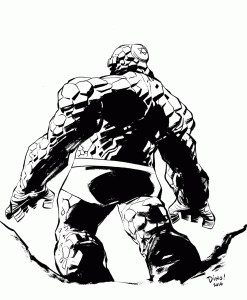
HASPIEL: “On the heels of the first Jewish Comic Con occurring the Sunday after America elected the very worst candidate ever to run for President of the United States, I can’t help but wonder how some of my favorite Jewish comix creators would’ve reacted to such a national atrocity. If I let my imagination run wild, I can see a divisive, sexist, racist xenophobic abomination advising Jack Kirby’s greatest villain, Darkseid in The New Gods, and/or Will Eisner’s The Spirit hopscotching the rooftops of Trump Towers to knockout a nefarious real-estate developer, and/or Harvey Pekar expounding outrage over a broken political system the likes of Bernie Sanders in the pages of American Splendor. As comix creators, it’s our duty to react to current events so that our art helps affect change. This past April, I launched a new superhero webcomic called The Red Hook at LINE Webtoons, where a broken hearted Brooklyn literally and physically secedes from America. Prescient?”
RAFAEL MEDOFF who along with CRAIG YOE will be speaking at the Jewish Comic Con about their new book, CARTOONISTS AGAINST THE HOLOCAUST, which reveals a remarkable and previously unknown chapter in Holocaust history–and cartooning history. It’s the story of a handful of political cartoonists who tried to alert the American public about the Nazi genocide. Some were Pulitzer Prize-winning muckrakers. Some were the targets of racist mobs. And some were Jewish refugees whose parents were trapped in Hitler Europe.
Frost: What does participating in the first-ever Jewish Comic-Con mean to you?
MEDOFF: We see it as a unique opportunity to interact with people who are just like us–that is, people who are interested in how the make-believe world of comics and cartoons can help teach about real-world topics like the Holocaust.
Frost: Your panel explores the little-explored history of cartoonists who used their medium to bring attention to the plight of European Jews during the Third Reich. What did you learn in your research of the topic?
MEDOFF: That while most Americans were indifferent to news of the Holocaust, there were notable exceptions, such as these cartoonists;That several of the cartoonists –Szyk and Godal– knew that their own parents were in grave peril in Nazi Europe, yet they refused to be intimidated into silence and continued drawing anti-Nazi cartoons; That the “We didn’t know” excuse is a myth–there was so much reported in the American press about the Holocaust, while it was happening, that even cartoonists were aware of it and commented on it.
Frost: As an educator and artist, what makes a cartoon the best pedagogical model for transmitting ideas?
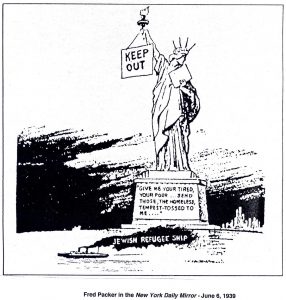
MEDOFF: A visual image sticks in a person’s mind in a way that ordinary text rarely does. Compare seeing film footage of the liberation of a Nazi death camp to reading about it.
Frost: What did you both learn over the course of your research that affected your opinions on how cartoonists responded to modern events, such as say: 9/11, the Iraq War, Presidential Election, the Charlie Hebdo shootings, etc.?
MEDOFF: That even though the print media is declining and there are fewer political cartoonists working today than in the past, many of today’s cartoonists are keenly sensitive to human rights abuses around the world and are unafraid to take them on.
The persecution of cartoonists –such as the Charlie Hebdo attacks and the mistreatment of cartoonists in some totalitarian countries– is a reminder that many people around the world still take political cartoons very seriously. If a dictator imprisons a cartoonist, that cartoonist must be doing something right!
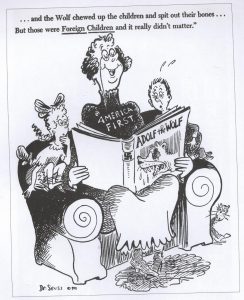
Political cartoons can be a powerful source for good–but they can also be used for darker purposes, such as the Palestinian Authority’s frequent use of political cartoons to incite the murder of Israelis.
Frost: What do you want people who attend your panel and read your book to grapple with?
MEDOFF: We hope the work of the cartoonists highlighted in our book will inspire people to recognize their own moral obligation to speak out against human rights abuses today. Whether “speaking out” means using one’s artistic abilities in service of a good cause, or finding some other way to contribute, it’s a human obligation that too many people easily forget.
JOSH NEUFELD is the writer/artist of the nonfiction graphic novel A.D.: New Orleans After the Deluge (Pantheon), the illustrator of the bestselling graphic nonfiction book The Influencing Machine: Brooke Gladstone on the Media (W.W. Norton), and the co-editor of FLASHed: Sudden Stories in Comics and Prose.
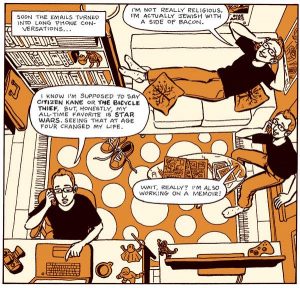
NEUFELD: I grew up in Southern California, brought up by my single mom as extremely Jewish culturally (Marx Brothers & Woody Allen movies, Chinese food on Christmas, etc.) and extremely non-religious (no Hebrew school, bar miztvah, etc.). Surrounded by hippies and surfers, until I moved back to my birthplace of NYC when I was 13, I was usually the only Jewish kid I knew. (As the late, great Seth Kushner put it, I’m Jewish with a side of bacon!).
I also grew up reading Mad magazine and superhero comics, both of which were fundamentally rooted in Jewish culture, even if I didn’t know it at the time. The more I’ve learned about the beginnings of the American comic book industry — so well illuminated in Michael Chabon’s The Amazing Adventures of Kavalier & Clay — the more I’ve come to appreciate what an exuberant, wildly creative “Jewish ghetto” it was back in the day!
Later influences were explicitly Jewish in origin in theme: Will Eisner’s Contract with God, Harvey Pekar’s American Splendor, and of course Art Spiegelman’s MAUS. As I grew up and developed my own career, my first published comics pieces were in large part thanks to folks like David Greenberger (Duplex Planet Illustrated), and my long association with Pekar and American Splendor. My own comics writing is not explicitly Jewish — other than one story’s lengthy examination of Jewish funeral practices and my own conflicted alienation from those types of rites. But I like to think that my stories, with their connection to social change — to people’s real-life struggles — and their love of language, reveal my roots in the Jewish cultural tradition.
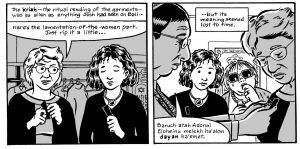
As far as the work I’ll have available at Jewish Comic Con, I’ll have my book A Few Perfect Hours (which has the story about my grandmother’s funeral), Schmuck (an anthology of stories all written by the late Seth Kushner about his dating adventures during his 20s; I’m a contributor), some American Splendor anthologies (with stories illustrated by me, as well as fellow guest Dean Haspiel), my book A.D.: New Orleans After the Deluge (about Hurricane Katrina), my book The Influencing Machine (written by “On the Media”‘s Brooke Gladstone), and a selection of my “floppy” comics, The Vagabonds and Terms of Service (about Big Data).
JULIAN VOLOJ is the author of the forthcoming graphic novel “Truth, Justice, and the American Way: The Joe Shuster Story” (to be published summer 2017. Art by Thomas Campi) about Superman’s co-creator, and the author of “Ghetto Brother” (2015) about former gang leader Benjamin Melendez (art by Claudia Ahlering).
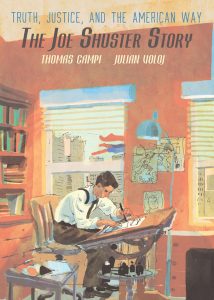
VOLOJ: As an artist, I’m often exploring questions of Jewish identity in my work. My nonfiction graphic novel “Ghetto Brother” is the story about the gang truce that paved the way for hip-hop in the South Bronx, but it’s also the coming of age story of Benjamin Melendez, a gang leader who learns about his Crypto-Jewish roots and reclaims his Jewish identity. My next book to be published in the U.S. will focus on Superman co-creator Joe Shuster. The history of the American comic book industry is Jewish history, and I think that might be the reason why there was never a Jewish comic con, but what could be better to celebrate the great contribution to American culture than having one?
JORDAN B. GORFINKEL aka GORF is a veteran comic book editor & writer. As a DC Comics editor for nearly a decade, Gorf managed the Batman franchise, including the development Batman: The Animated Series and film franchise. He masterminded the comic book story “No Man’s Land,” which spanned across all of DC’s Batman titles for one entire calendar year, and inspired Christopher Nolan’s Batman Begins. His long-running strip EVERYTHING’S RELATIVE runs in Jewish publications all over the country. His latest original graphic novel is Michael Midas Champion (Penguin Random House). Gorf is the creator of Birds of Prey, the longest-running superhero comic starring women protagonists since Wonder Woman.
GORFINKEL: Jews are the people of the comic book. Having created this medium nearly a century ago and to have it embraced by the entire world, that the Jewish connection to comics should be analyzed and have it come full circle is so exciting. And I’m particularly excited to see all the cosplayers dressed up as Super-Bagel!
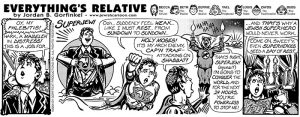
The first ever Jewish Comic-Con takes place at 603 St Johns Place Brooklyn NY, 11238 on November 13th beginning at 9am and going til 6:30pm (with Preview Night on Nov.12th from 8:30pm to 10pm ).
Visit http://jewishcomiccon.org/ for more information.




